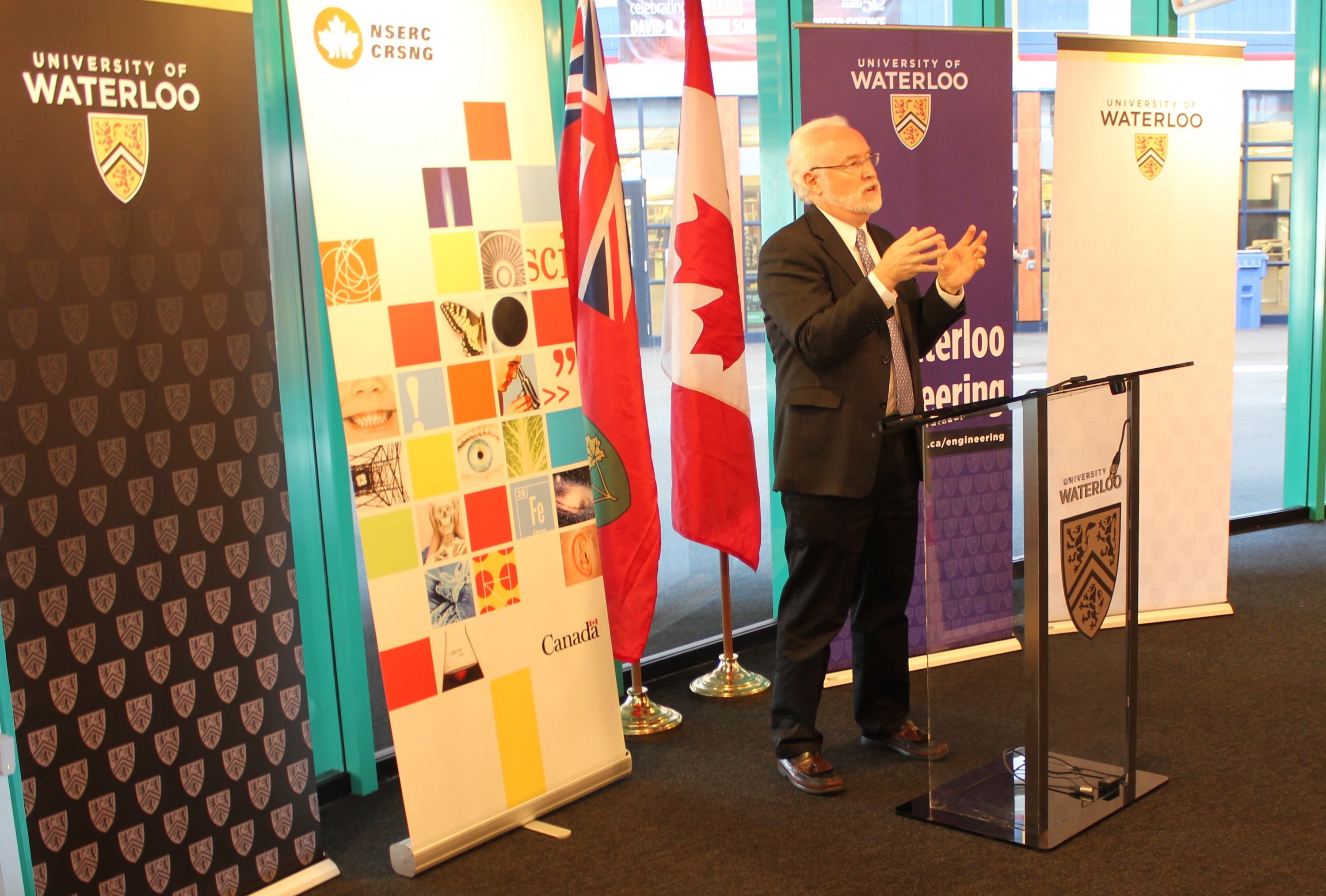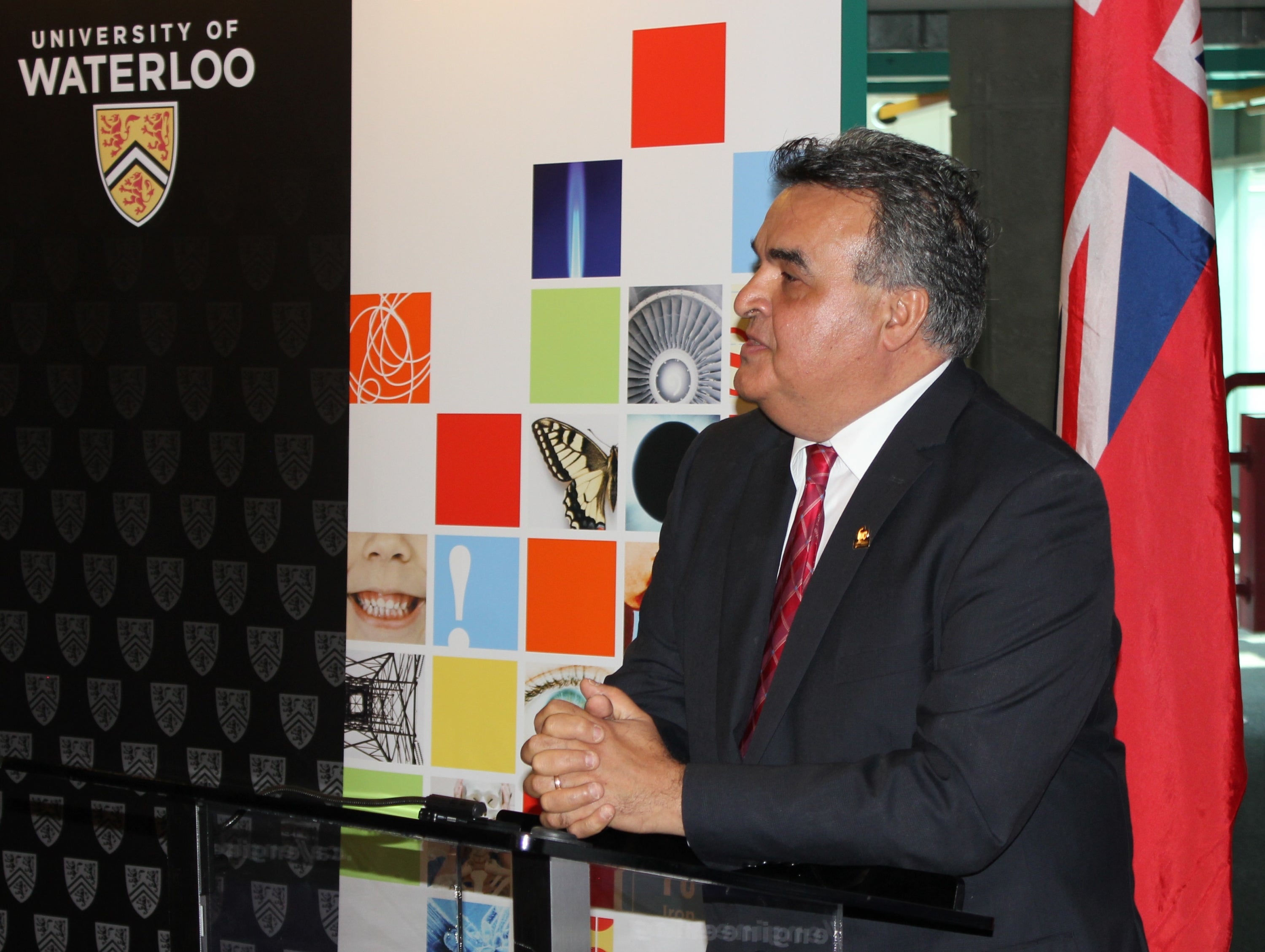Engineering researchers at the University of Waterloo are working with Ciena to find solutions to help network operators and service providers respond to the insatiable demand for faster and faster data transmission over the Internet.
A key area of Waterloo’s partnership with the network strategy and technology company involves squeezing as much capacity as possible out of fibre optic cables that run under the world’s oceans and handle upwards of 95 per cent of all intercontinental communications, including $10 trillion a day in financial transactions.

Stephen Alexander, Senior Vice President and Chief Technology Officer of Ciena, speaks during the announcement today of a research partnership with Waterloo Engineering.
The research relationship, which was announced during an event at the University today, is also supported by the federal government through the Natural Sciences and Engineering Research Council of Canada (NSERC).
The reliable, high-speed transmission of vast amounts of information via undersea cables is increasingly important in fields including healthcare and academic research, as well as for consumers who expect quality high-speed Internet service on their cellphones.
“The thirst for additional bandwidth and capacity is unquenchable,” said Rodney Wilson, Senior Director for External Research at Ciena. “It’s a battle of tiny, tiny increments. When you add them all up, it creates market-leading innovations.”
Led by Amir Khandani, an electrical and computer engineering professor, the Waterloo Engineering research team develops algorithms to efficiently and rapidly correct errors – essentially lost or dropped bits of data - that occur during extremely high-speed, long-distance transmission.

Amir Khandani, a professor of electrical and computer engineering, leads a research team of post-doctoral fellows and graduate students at Waterloo Engineering.
Included on electronic chips that are built into equipment for receiving and transmitting data, those algorithms free up cable capacity while also enabling the correction of errors to keep pace with other technological advances.
“What matters a great deal to us is knowing that what we do is being used and is benefitting people,” said Khandani, whose team at any given time includes about eight post-doctoral fellows and graduate students. “Seeing our work have a direct and immediate impact is very rewarding.”
The relationship between Waterloo Engineering and Ciena has already produced seven U.S. patents, with more pending. Many student researchers now have full-time positions with the company.
“Working with the University of Waterloo gives us a competitive edge,” said Wilson. “Professor Khandani and his students open our minds to new approaches and innovative ways of addressing the needs of our customers.”
Customers of Ciena, which describes its work as helping to create “the circulatory system of the Internet,” include many of the world’s largest service providers, as well as research and education, web-scale and enterprise networks.
Under the three-year partnership, Khandani holds the position of Ciena/NSERC Industrial Research Chair on Network Information Theory of Optical Channels.
About Ciena
Ciena (NYSE: CIEN) is a network strategy and technology company. We translate best-in-class technology into value through a high-touch, consultative business model – with a relentless drive to create exceptional experiences measured by outcomes. For updates on Ciena, follow us on Twitter @Ciena, LinkedIn, the Ciena Insights blog, or visit www.ciena.com.